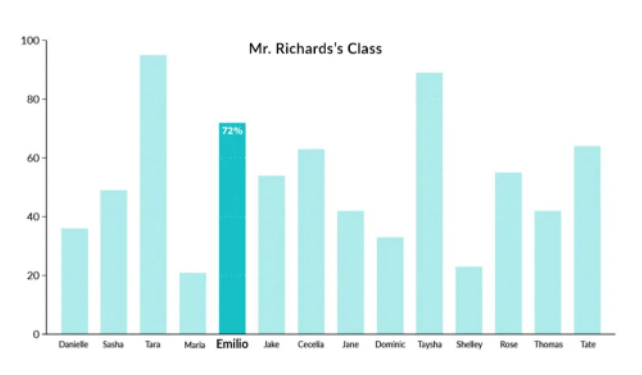
How Do We Know Our Students Are Learning? And If Not, What Can We Do about It?
2-min. read
4-min. read

You rely on your assessments for a full picture of what your students know and can do—for example, where they are in their learning.
But too often, assessment scores tell educators only a fraction of what they need to know in order to help all their students. This is because some assessments provide only normative (or “norm”) data that only shows how students performed compared to their peers. While that’s valuable information, it doesn’t reveal what each individual student needs or where they are relative to grade-level learning.
For a complete picture of student learning, educators also need criterion-referenced assessment data, which measures student performance against grade-level standards or some other predetermined criteria.
Carlos is at the 50th percentile in math, but has he mastered grade-appropriate content? Olivia has made a year’s worth of growth, but if she’s performing below grade level, how do we know she’s on track to reach proficiency? In what specific areas do our students need extra support so we can help them achieve their goals?
In short, students need targeted instruction based on rich assessment data.
Let’s explore an example.
Fifth grade teacher Mr. Richards sees that Emilio has a national percentile rank of 72 and that he is performing above most of his peers nationwide.

Great news, right? Unfortunately, that norm-referenced data only tells part of the story. How is Emilio performing compared to grade-level learning? When we show where Emilio and his classmates should be, his results are less clear-cut.

While Emilio is performing better than many of his peers, he has not met the standard for grade-level work. It’s not enough to see where Emilio stands in reference to his peers. To address this, Mr. Richards must also understand what Emilio knows, where he struggles, and how to create growth goals that will allow him to be successful in on-grade level work.
Is the assessment telling Mr. Richards enough about how far Emilio is from grade-level proficiency? What can he learn from the test questions Emilio missed or the domains in which he excelled? Would more information about the amount of growth Emilio needs motivate him more than simply knowing how he compares to his peers? We need the answers to these questions in order to create meaningful learning goals.
Now, what if Emilio’s assessment report contained domain information in addition to his overall performance? In the domain placement information below, Mr. Richards can see that while Emilio is now in the fifth grade, his overall Reading score is at the Grade 4 criterion. He places at a Grade 3 level in some of the domain areas.

Based on these criterion- and domain-referenced insights, Mr. Richards can personalize Emilio’s instruction so he gets more practice in Phonics and other areas where he can improve.
Additionally, dependency on norms alone can result in inequitable results for students, especially students from historically marginalized or underserved communities.
“Norm-referenced tests encourage teachers to view students in terms of a bell curve, which can lead them to lower academic expectations for certain groups of students, particularly special-needs students, English-language learners, or minority groups,” according to the Glossary of Education Reform.
And when academic expectations are consistently low year after year, students may never catch up to their peers nor master grade-level standards. But this is not inevitable. We know how to do better by our students.
Comprehensive assessment data should provide answers to these three fundamental questions:
Although norm-referenced scores can be helpful, they usually tell us only half the story. For the actionable, instructionally relevant insights that lead to student success, the ideal assessment provides both norms and grade-level placements.
As we begin another school year with significant unfinished learning concerns, we need the whole story. Our students depend on it.
To make the most of your Diagnostic data, download our Practical Guide to Analyzing Data protocol to help you strategize, no matter what assessment provider you use.

2-min. read

2-min. read

2-min. read